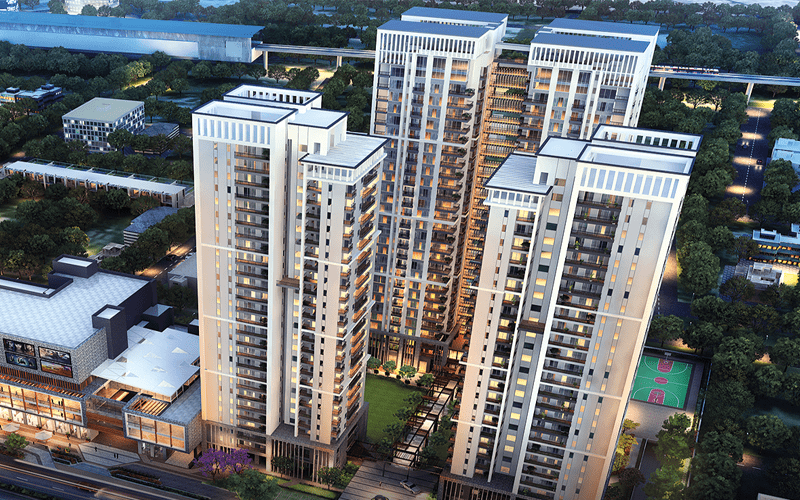Navigating the Challenges of Urban Flooding in Gurgaon
Gurgaon is one of the rapidly developing cities in India that has developed infrastructures and population over the years. With this growth, however, comes one major challenge that is the flooding of urban cities. Flooding is one of the most persistent issues in Gurgaon that have had an impact on people’s lives and have caused significant property damage.
Heavy rains swiftly flood roads, houses, and business areas, indicating underlying deeper systemic issues. To deal with urban flooding in Gurgaon, one has to understand thoroughly its causes and implement effective measures of flood management.
Key Causes of Urban Flooding
1. Unplanned Development and Encroachments
Hastened urban growth in Gurgaon has been followed by haphazard development, with natural water courses either being blocked or constructed over. Several low-lying regions that previously served as natural reservoirs are now sites for commercial and residential establishments, causing water accumulation and heavy floods.
- Encroachment of natural drainage channels
- Absence of planned urban planning
- Development of flood-prone areas
2. Ineffective Drainage Facilities
The current drainage system in Gurgaon is inadequate and proven in the periods of monsoon season where there is a huge influx of rainfall. Stormwater drains become blocked with trash, and the lack of a proper network of drainage only makes water stagnation worse. Most of the storm drains are either nonexistent or badly designed hence the poor flow of water.
- Inadequate drainage capacity
- Poorly maintained and blocked storm drains
- Absence of underground drainage networks
3. Climate Change and Extreme Weather Patterns
Global warming has led to increased occurrence and intensity of rainfall which has led to increased floods in Gurgaon. Flash floods and heavy rains within a short period block the drainage system causing water logging in different areas of the city.
4. Waste Mismanagement and Blocked Drains
Water logging is one of Gurgaon’s major issues and the main culprit behind it is the improper disposal of waste. Construction material, plastics, and other types of solid wastes are commonly found clogging drains making them ineffective. The absence of organized waste management procedures contributes to water standing, which adds to urban flooding.
- Plastic and solid waste dumping in drains
- Inefficient waste management policies
- Unrestricted construction debris build-up
Major Areas Affected
It is sad to note that some of the important places of the city are flooded more often due to poor drainage systems and unplanned development of urban cities. The areas that are most prone to Gurgaon waterlogging issues are the following:
| Flood-Prone Area | Key Issues |
|---|---|
| MG Road | Water accumulation due to poor drainage |
| Sohna Road | Low-lying zones experience severe flooding |
| Golf Course Road | Traffic disruptions and infrastructure damage |
| NH-48 | Water stagnation affecting highway connectivity |
These places are subjected to massive disruptions, such as traffic jams, damage to properties, and public health risks, making efficient flood management measures indispensable.
Possible Solutions & Government Initiatives
1. Upgrade Drainage Systems
It is very essential to have a healthy drainage system and the design of that drainage system in Gurgaon to avoid the problem of flooding. Strengthening and deepening stormwater drains, regular maintenance thereof, and establishing underground drainage systems can considerably enhance water management during heavy rainfall.
Through employing sustainable urban development and proper implementation of flood control measures, the causes of urban flooding can be easily mitigated and a more robust city can be developed for citizens.
2. Adopting Green Infrastructure
Implementing sustainable urban planning practices can enable better control over excess water. Rainwater harvesting systems, permeable pavements, and bio-swales can be introduced to improve the city's capacity for rainwater absorption and diversion to check waterlogging.
- Rainwater harvesting facilities in commercial and residential zones
- Employment of permeable materials for sidewalks and roads
- Establishment of urban green areas and retention ponds
3. Public Awareness and Community Involvement
Of all measures, probably one of the most critical is the community engagement in flood prevention efforts. This way the residents can help the city manage floods by practising proper waste disposal, avoiding construction on natural water bodies and increasing awareness of floods.
- Public education on waste disposal habits
- Community-based drainage maintenance programs
- Flood preparedness program promotion
4. Government Initiatives and Policy Changes
The state government of Haryana and municipal authorities have made a number of efforts to solve the problem of flooding in Gurgaon. Some of the recent efforts include the construction of new drainage schemes, more stringent building regulations, and higher budgetary allocations for stormwater management. But effective implementation of these policies depends on active enforcement and citizen participation.
Conclusion
The future resilience of Gurgaon will be based on the combination of development of infrastructure, rigorous regulation, and community engagement. For expert advice in green city planning and infrastructure solutions, Bhavishya Nirman Developers offers creative urban planning solutions for flood management in environment challenges.








